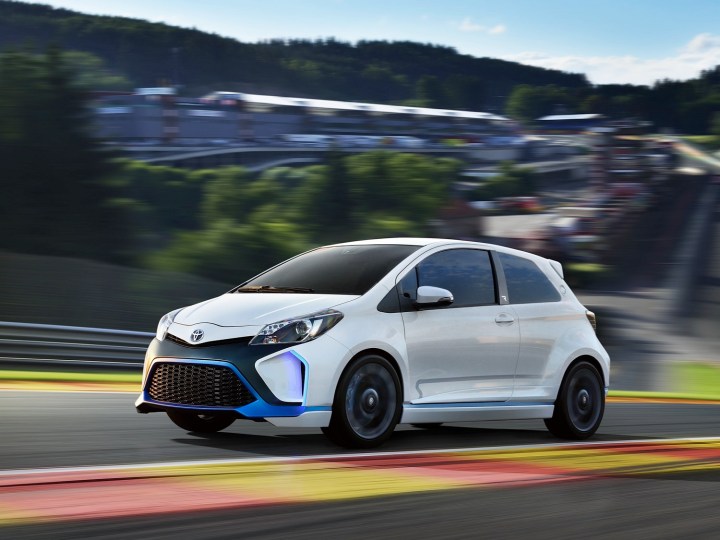
Speaking to Australian website Car Advice on the sidelines of the Tokyo Motor Show, Toyota chief engineer Tetsuya Tada explained that not transforming the racer into a production model simply wouldn’t make sense. He stopped short of confirming full technical details, but he hinted that the front-wheel drive, sport-focused Yaris will use a four-cylinder engine fitted with a big turbo. It will need to deliver approximately 200 horsepower in order to outgun the GTI and the STI, which make 189 and 197 hp, respectively.
Toyota will also install a wider exhaust line, more powerful brakes on both axles and a stiffer suspension. As a result, the Yaris will be much louder and much lower than the regular-production econobox that’s currently sitting in Toyota showrooms.
The turbocharged Yaris will also boast a rally-inspired look characterized by add-ons such as model-specific bumpers on both ends, a generously-sized roof-mounted spoiler and wide fender flares. All told, the hot hatch could end up looking a lot like the 400-hp Yaris Hybrid-R concept (pictured) that was discreetly introduced in 2013.
More details about Toyota’s Yaris-based hot hatch will trickle out over the coming months, and it might be previewed by a close-to-production concept at a major auto show next year. It is expected to go on sale in Japan and in Europe in about 2017, but at the time of writing it is too early to tell if Toyota is planning on hunting the Ford Fiesta ST on its home turf.
Editors' Recommendations
- Toyota announces site for its first U.S. battery plant
- Toyota gives its sweet, race-ready Supra the green flag for production
- Toyota uses hydrogen fuel cells to power one of its Japanese factories
- Toyota and Subaru are expecting again, but this time it’s not a sports car



